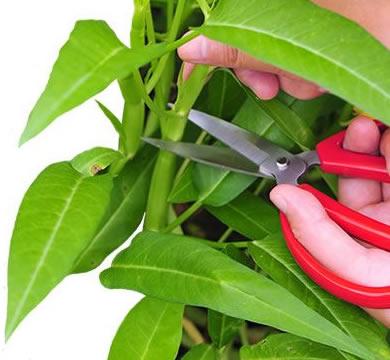





Armadillos
How to Trap an Armadillo
Armadillos are unique creatures with predictable habits, which make them quite easy to trap when following the proper guidelines. Below, the pros at Havahart® provide step-by-step instructions on how to catch an armadillo as well as additional armadillo trapping tips that will help you in the process.
1 Select a Armadillo Trap

The ideal live armadillo trap is large or x-large - about 32-42 inches in length and 12 inches high. This allows enough room for an armadillo to fully enter the trap.
Choose from either a 1 or 2-door model:
| 1-Door |
|
| 2-Door |
|
2 Determine Trap Placement

Armadillos are habitual animals with poor eyesight, and they depend on specific travel paths that guide them to and from their burrows. It's important to try to identify an armadillo burrow and nearby travel paths so that you can take advantage of these habits.
Some effective locations for an armadillo trap include:
- directly above the burrow entrance
- along a wall or fence line, a short distance from the burrow entrance
- on a well-traveled path - marked by a trail of armadillo tracks or recessed grass
TIP: If you cannot locate your armadillo's burrow, place the trap along a wall or fence line near the damage in your yard.
3 Bait Your Trap

Because armadillos instinctually dig for their food, they are less motivated by food above ground. Baiting your trap is optional - some trappers find that bait attracts unwanted critters to the trap, while others swear by specific baits that attract armadillos.
If you do choose to bait your trap, keep the following guidelines in mind:
- Select a bait strongly preferred by armadillos, like meal worms or earth worms.
- Position your bait in a way that will lure the animal all the way inside the trap and cause it to step on the trigger plate (see diagrams on the right).
For more bait options and expert tips, read How To: Armadillo Baits »

4 Set Your Trap
Set your armadillo trap just before they come out to forage. Armadillos are mostly nocturnal, but during the wintertime in cooler climates they often come out during the day.
Follow your specific trap's step-by-step instructions, as each live trap may set differently.
TIP: Set your trap in one simple step with Easy Set® technology.

5 Check Trap Often
No animal should remain trapped inside a cage for an extended period of time. Armadillos in particular are known to try to escape after some time, digging into the bottom of the trap or running into the trap walls. Monitor your trap to avoid neglecting a trapped animal.

6 You've Caught an Armadillo!
- Wear heavy protective gloves when handling the trap, and hold the cage away from your body to avoid contact with the animal.
- If local wildlife regulations permit, relocate your armadillo to a moist, forested environment - preferably near a stream or river at least 5 miles away from the property.
- When releasing the armadillo, stand away from the trap door, allowing the animal to calmly exit.
- Make sure your armadillo's burrow is empty, and fill it in with gravel to prevent other animals from inhabiting it.

7 Reduce Attractants
After removing your armadillo, make your yard less accommodating for future invaders. Armadillos are attracted to food underground - grubs and insects living up to 7 inches below the surface - which makes completely removing attractants nearly impossible. However some important steps you can take include:
- Removing cover like brush, wood piles, low-lying bushes and shrubs. Armadillos prefer to burrow in areas of ample cover, so by opening up your yard, they'll feel less at home.
- Cleaning up fallen berries and fruits, to which some armadillos may be attracted.
- Spoiling the underground food source with an all-natural castor oil repellent.
Expert Tips
- Before attempting to remove an armadillo with a live trap, become familiar with the trapping and relocating laws in your area.
- It's important to provide armadillos with a physical guide that leads them into your trap. Place wooden planks or temporary fencing on either side of the trap opening in a "V" shape to funnel an animal inside.
- If using a 1-door trap, position the trap so that the open door faces the burrow entrance in order to catch the armadillo on its way out to forage.
- Make sure your trap is sturdy by setting it on a flat, level surface and placing a brick on top to weigh it down.
- After removing your armadillos with a live trap, keep them out with an effective armadillo repellent.
